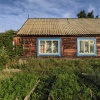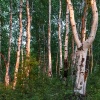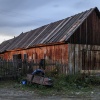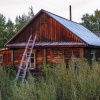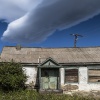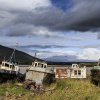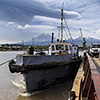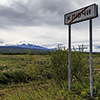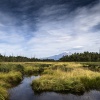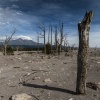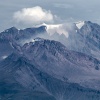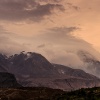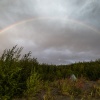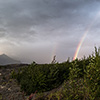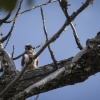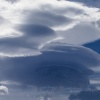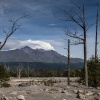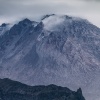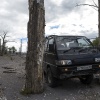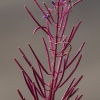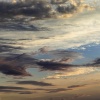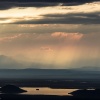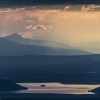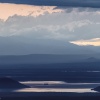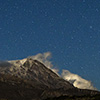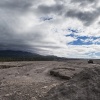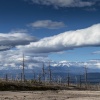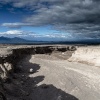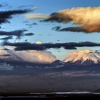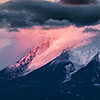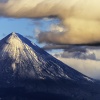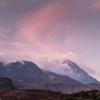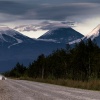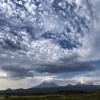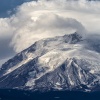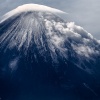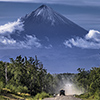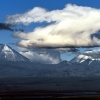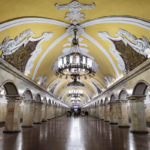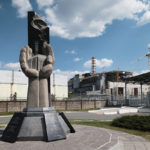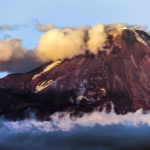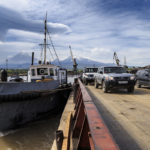Klyuchevskoy and Tolbachik – The northern Volcano Giants
Kliuchevskoi – an impressive name reminding of a Russian poet and thinker. Actually the official name of Russia’s pyramid is Klyuchevskaya Sopka (Ключевская сопка) but even for the locals this title seems to be a little too long. The fire mountain stands for quite a bunch of superlatives, for example being with an altitude of about 4800 meters the highest volcano not only on Eurasian continental plate but also in northern hemisphere. It is majestic, tall, snow covered and farouche, having a perfectly shaped cone and it is part of one of the biggest volcanic systems on our planet; a volcano cluster being that large being easily visible to the unaided eye even from space. To the north of Kliuchevskoi the name giving village of Klyuchi (Ключи) is located, a small settlement at the banks of yet another name giver, the Kamchatka River. Klyuchi is the gate to the northern territories of the Kamchatka peninsula such as the unpredictable, old and wide spread Shiveluch (Шивелуч) volcano. From Klyuchi you can also access the uninhabited East by serpentine endless tracks cutting through the forest and also the South of the volcano mountain cluster with impressive Tolbachik (Толбачик) volcano isn’t that far away anymore.
It is 5:30 in the morning. Nikolai Nikolaevich, whose actual name is Valudya, opens the creaking wooden door of his typical shelf-made Siberian timber house. His “Vilka! Loshka!” calls are cutting through the dawn and shortly after a scraggy dog and a solitary show up. A guy who’s calling his pets “fork” and “spoon” is definitely likeable, not only because he’s cutting grass with a scythe very early in the morning, topless only wearing camouflage pants and rubber boots. A textbook example of a Russian :-)
Sleeping under Shiveluch lava dome
The morning dew already crept into our tents and sleeping wasn’t possible anymore hence we took down our campsite and left lovely Kozyrevsk, a village in northern Kamchatka being home to barely 1000 people. Our “escape” didn’t remain unnoticed as the neighbour of Nikolai Nikolaevich, whose actual name is Valudya, seized the early morning moment and asked for something drinkable again, some hard liquor of course. For us – volcano photographer Martin Rietze as well as volcano camera man and Geonaut Marc Szeglat – the journey started with a visit to the village of Klyuchi to catch its ferry crossing Kamchatka River to make us reaching Shiveluch volcano.
If there’s rain then it’s rain on our parade, but if the sun comes out then one eats dust and becomes eaten by mosquito myriads.
We are lucky. Our driver and guide Alexey gave his car the cane and we reached the 12 o’clock ferry. If we would have missed it waiting until 4 pm would have been on the bill. The pontoon attached to a boat is the only connection to get to northern Kamchatka territories. We arrive Shiveluch’s bottom and push forward into its PF delta, the area where hot avalanches, so called pyroclastic flows, are rushing down. Seen from below, the lava dome seems to be active as its emitting steam, smoke and gas. Despite that, or maybe even because of that, we took up position near its eastern bottom to sit on the watch for capturing volcanic activity photographically. (here’s a video from Marc Szeglat)
No chance! The sky seems to have something against our presence. Within one hour only an ocean of clouds piles up at Shiveluch’s summit and shrouds the volcano as well as the lava dome in opaque cotton wool like low stratus. Suddenly the wind freshens and whips fierce cold rain showers over our heads. It’s impossible to take volcano photos under such conditions, unfortunately; hence we backtrack to our lovely one man tents and see them from inside.
Finding sleep isn’t possible though as during the whole night the wind tears on the tent like ravenous New Zealand’s national team rugby trying to enter a kitchen; also it’s been quite some awake keeping mental cinema to sleep in the potential downrange of a lava dome. At the night sky clears up and the armada of clouds gives way to a sea of stars. Fortunately the visibility persists until the morning and lets us enjoy the sunrise over Kliuchevskoi that is some 70km far away.
At this point in time I didn’t know how important the focal range 200-400mm will become during my whole travel; a focal length being actually not that optimal at hazy weather conditions as quality of contrast and colour in the photos often drops. Hence please forgive if a fraction of the photos looks a bit stale or bluish. At hazy weather that happens automatically but I still want to show you those photos because of the perspective.

